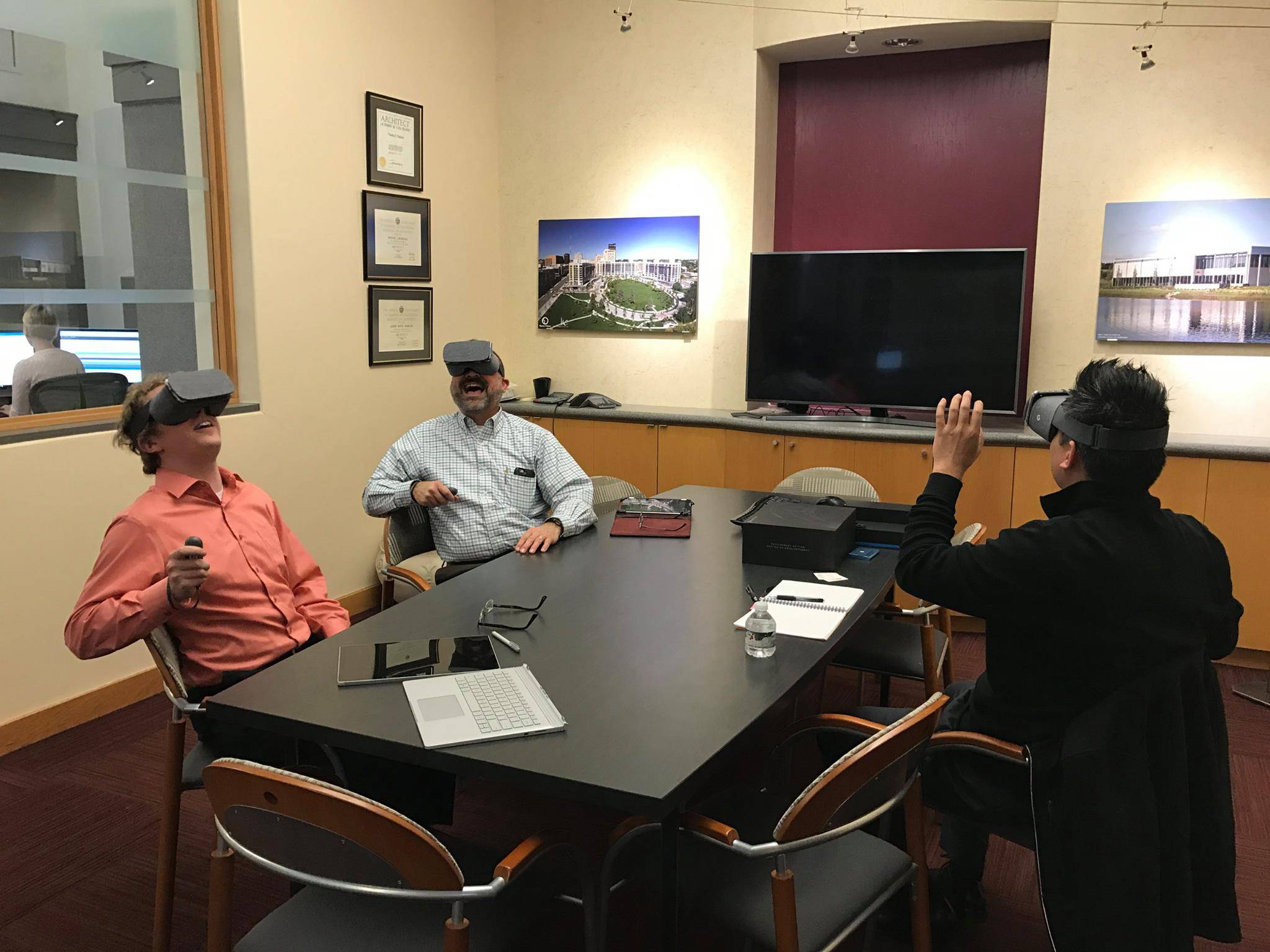
At HBA, we believe staying ahead of the industry isn’t an option – it’s a requirement, especially in terms of technology.
Since the firm was founded 28 years ago, we have evolved to expand our knowledge and limits when it comes to enhancing our work through technology and training. This allows us to deliver unique solutions to our clients during all phases of a project.
This past December, HBA created the Immersion Studio, a virtual design space in our office that gives our clients, designers and project partners the ability to experience their projects long before construction has begun. It is a completely immersive environment that allows you to view and understand your project by experiencing it in virtual reality (VR). Our Immersion Studio has sensors that track your movements as you walk around the virtual space, so it feels like you are actually walking through your project.
As designers, we think and work in three dimensions, but most of our clients do not. Up until now, most of the 3D visualizations we created were limited to being viewed on the computer screen, architectural plans, and renderings. However, those are still only 2D representations of the project. For 3D representation, we built models by hand or in conjunction with 3D printing. Since 2013, we have utilized viewers such as Google Cardboard, to give clients a 3D view of a project from one point in space. We also implement rapid prototyping techniques where we build a full-scale mockup of the room or suite.
The invention of virtual reality is a game changer. It allows us to express our ideas and designs to our clients so they can view it in the way we intended. We can truly experience our designs as we would in the real world. It utilizes the software and computer models we already create and use throughout the course of a project, which allows us to quickly jump into the model and experience it at full scale. The ability to go beyond typical drawings and renderings to giving our clients the opportunity to see their space in virtual reality, has been extremely beneficial for both our design team and our clients. Whether we are looking at massing the building on the site, working through the layout of an office or medical suite, or coordinating our construction documents using our team’s building information models.
Looking back over the past 20 years, the evolution of technology has positively impacted the quality of work our firm has produced. We will continue to implement these technological advancements and accept the challenges to deliver quality work and unique experiences to our clients.
Matt Neaderhiser, Architect and Associate at HBA.



